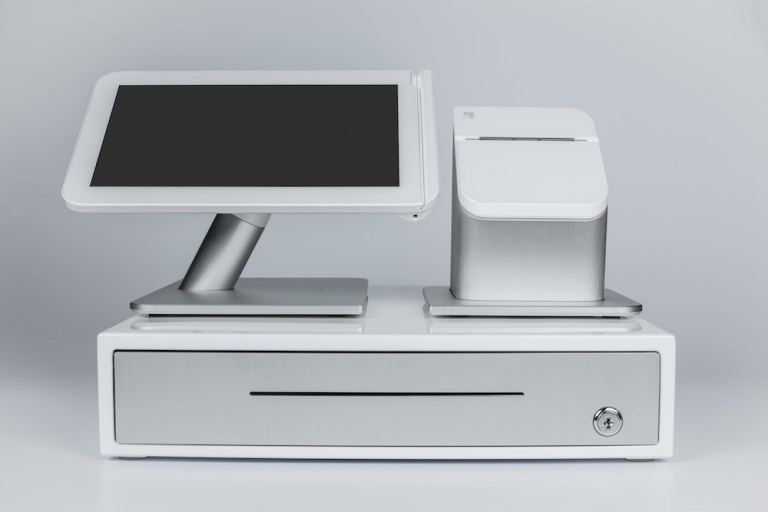
When First Data quietly announced its purchase of Clover in 2013, the move was widely covered as a competitive answer to Square (and its many imitators). The common narrative was a tale of two payments hardware firms – with Square playing the part of the of the streamlined payment platform best for super-new SMBs that didn’t need a lot of extra functions and Clover cast as the heavier-duty option for more established small businesses that needed more back end functionality.
However, the differences between Clover and Square weren’t usually hashed out in terms of what services each firm had to offer – they were delineated by which clients each firmed served. The common thread was that each fished in the same SMB waters – with Clover showing a preference for the deep end with somewhat bigger fish while Square worked with a dip net in the shallows.
From a narrative standpoint, everyone loved telling the story that way. Everyone loves a horse race, and a race can only happen if both jockeys have their horse on the same track at the same time. But however convenient that narrative might have been, it has the not-so-minor defect of being inaccurate, according to First Data EVP and Head of Global Business Solutions, Dan Charron.
“The biggest misconception is that people perceive Clover as a piece of hardware for small businesses and that it is a closed environment,” Charron noted in a recent interview with PYMNTS. ““It’s actually a very different thing than what people perceive.
“We say Clover is an operating platform – it’s not a piece of hardware. It was designed to be open and designed to be cloud-based.”
Which isn’t to say that hardware isn’t important to Clover – it obviously its – or that they don’t offer end-to-end solutions for clients in some cases – but in other cases they leverage a partner network hundreds of members deep.
“We call ourselves the grand collaborators,” Charron noted. “We understand that across the spectrum we have to work across the value chain with partners – to bring solutions to customers. SMB is a unique segment and unique segments need unique solutions.”
Uniqueness – and customizations – is also where Clover shines, according to Charron – and though small and medium sized businesses are one type of business that needs a custom solution, they are far from the only type.
In fact, Clover’s latest collaboration with Bypass will serve venues that are anything but small – they are the types of large scale arena venues that host sporting events and rock concerts.
Serving An Unusual Segment
“If you think about major sporting locations and concerts – they are moving to ones in which there are fewer transactions but more experiences,” Charron noted. “We think that having our products integrated with Bypass and their existing relationships is a great foundation to develop and innovate on.”
As large, complex multi-site operations, large venues are an ecosystem onto themselves that have a variety of consumer touch points. Clover POS technology and business management suite is now fully operational in conjunction with Bypasses cloud-based software and back office management tools.
“We worked together to create solutions for these institutions,” Charron said. “It is a new vision that provides everything front-to-back.”
And that “front-to-back” capacity – which is particularly important in multi-site operations where there are many plates in the air – was really only possible through collaboration and a dual commitment to creating that holistic solution.
“We couldn’t have done that by ourselves, they couldn’t have done it by themselves, but together we have built a best-in-class solution.”
Complex Systems For Complex Needs
Sports and entertainment venues – of the types Clover-Bypass are up and running in today – in many ways demonstrate the need for more holistic systems.
“[The clients] need the speed and security of transactions and the ability to enable multiple locations.”
And those “multiple-locations, Charrons notes, aren’t necessarily going to be within something that looks like a traditional storefront.
“They might be on their phone, in the stands or at the store. They are in an environment – they aren’t standing still – and the ability to move throughout that environment in a comprehensive fashion is probably the biggest thing.”
The point, Charron says, is that the customer never feels the friction as they are moving around the environment – they can transact when they want to, how they want to without really thinking about it.
The second biggest challenge, he notes, is making sure the system stays that frictionless.
“We need to not only do what needs to be done today – but also have a flexible system that can evolve as those customer experiences evolve in these locations.”